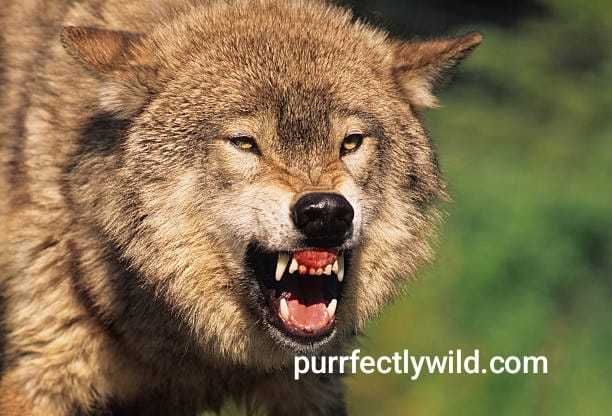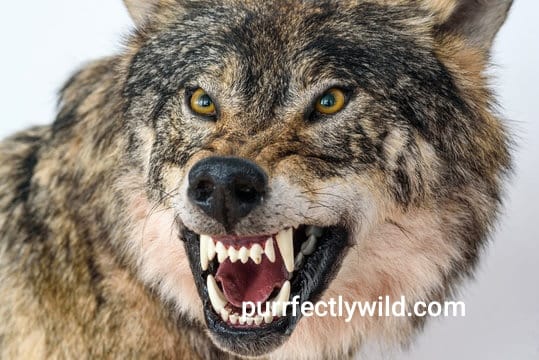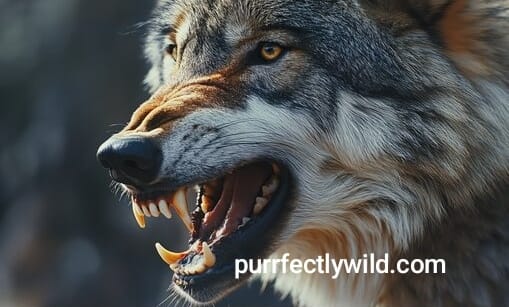1. Introduction
Wolves are one of the most fascinating wild animals on Earth because they have fascinated human imagination for centuries, being majestic predators at the top of the food chain. Where they fit in ecosystems, elaborate social structures, and incredible prowess as hunters have all been well-documented. Something that is equally amazing but often overlooked is their dental anatomy. Our behavior, relatives’ behavior, diet, and snot-so-very-distant can be deduced through their weaponized weapons. In this article, we delve into the fascinating world of wolf teeth, explaining their anatomy and types, talking about some fancy features they possess, such as ridges and spines, discussing function in past ancestors at an animal level with fence crossing(assuming nature takes course)..and finally providing fun trivia statistics, i.e., what % are truly sharp vs. dull toothbrush groomed wolves which bristle up each winter to leave behind blunt grooves due adventure!
2. Anatomy of Wolf Teeth
The teeth of wolves are a work of anatomical art forged by evolution. A wolf has a complete array of 42 teeth — incisors, canines, premolars, and molars. Wolves use their entire mouthful of teeth to hunt efficiently, each type of tooth playing a specific role.
Incisors– small, sharp incisors are anterior-most in the mouth. These teeth allow wolves to stick and tear meat from bones.
Lateral incisors are the teeth on either side of the midline, sometimes referred to as canines. Dogs need these teeth to grasp and catch prey. They are also used in defense and social interactions.
Premolars—Located just behind the canines, premolars have a flatter surface with one or two prominent cusps used to shear and slice flesh. They are three-pronged, pointy teeth that have an uneven surface ( as opposed to the flat incisors or canines seen in other species)
Molars: The molars, made for grinding and chewing, are the farthest back in the mouth. They grind the foods into small, transparent particles so that wolves can better digest meat.

3. Types of Wolf Teeth
Wolf teeth are also classified into types based on their location and role. Different kinds suit various elements of a wolf’s diet and lifestyle.
Incisors (I1, I2, I3): These sharp teeth serve various purposes in the grooming and feeding. Incisors — wolves use their incisors to clean and remove meat and fur from bones.
Canines (C1): The canines are the most prominent teeth designed to deliver deep, penetrating bites. They are used in subduing prey and fighting.
Premolars P1-P4: These teeth specialize in meat slicing and bone processing with a serrated edge. The upper premolars are exceptionally sharp and have an essential role in feeding.
Molars (M1, M2, M3): These are meals grinding and crushing teeth. They assist in digesting some harder-to-digest food products and are essential for longer-duration diet (omnivorous) consumption.

4. Function of Wolf Teeth
Their wolf teeth are essential for survival and everyday functions. All kinds of teeth help to hunt, chew food, and communicate with the world.
Hunting: The anterior canines and back premolars are critical for grabbing and killing prey. The canines give the hyenas a strong bite to disable large prey, and their premolars, with their cutting edges, help them tear through flesh.
Feeding: They may also use incisors while eating. Incisors scrape the meat, and molars prepare and grind food to ease digestion.
Defense: Dogs are used to defend against enemies and animals like wolves. These can put significant hurt in any hand a threat tries to throw your way.
For social interaction, Wolves show their teeth prominently, such as during dominance displays and when playing. TOOTH POSITIONS (5–6): This tooth position is similar to number 1, but the openings in the closed teeth are larger, and their placement is higher, indicating a rather severe spirit of opposition.
5. Special Features of Wolf Teeth
A few characteristics specific to wolf teeth indicate their particular functions in the wild.
Wolf dogs are one of the largest canid species. Their size and power help them take down bulls or bison.
Slicing Edges: Wolves have sharp, serrated edges on their premolars and molars, which allow them to process meat and bone. Adaptation is vital to overcome times when nothing seems on your plate.
Dental Formula: Wolves have an absorbing dental formula, which not only changes slightly among individual wolves. These formulas will show you an easy way to see the differences between age, health, and a poor diet.
Wear Patterns: The type of wear on the teeth allows us to estimate if this is an older or a younger wolf and what it was eating. These could be challenging food objects that they make you consume, such as heavy wear on molars.
6. Little Known Facts & Statistics
Many interesting facts and figures emphasize the importance of wolf teeth in their biological living style.
Dental Formula: Wolves have a dental formula of 3/3, and they possess incisors at the front and molars at the back. That is four premolars, one canine, three incisors, and three molars on either side of the lower or upper jaws.
Bite Force: It is known that wolves have approximately 1,200 to 1,500 pounds per square inch (psi) worth of bite force. It is essential for killing big game and defending against threats with its strong bite.
Tooth Replacement: When it comes to getting older, just as most (at worst) fourths of our lineata are tooth replacements. Puppies have baby teeth, which fall out and are replaced by adult teeth around six months.
Prey Size: The size of the prey a wolf can take down is typically correlated to the length of its canines. Wolves’ largest prey are bison and Moose. This mighty beast requires incredible dental adaptations.
Teeth: Dental health is critical in wolves, as bad teeth can prevent them from hunting and eating. Dental wear and fractures occur daily in free-ranging wolves.
Conclusion
Wolf teeth is a curious topic that gives us an insight into the life of one of nature’s best killers. Wolf teeth: Their elaborate architecture, numerous forms, and multiple roles demonstrate the phenomenal adaptability of these animals to differing ecological niches. By grasping these elements, we can better understand wolves and fur; they emphasize the necessity of conserving their ecosystems and securing them in the wild.
Frequently asked questions (FAQs) about wolf teeth:
- What types of teeth do wolves have? Wolves have incisors, canines, premolars, and molars, each serving different functions such as gripping, shearing, and grinding food.
- How do wolf teeth aid in hunting? Wolf canines are used for gripping and killing prey, while premolars help shear meat from bones. Their strong bite force helps in subduing large animals.
- What is the dental formula for wolves? Wolves typically have a dental formula of 3/3, 1/1, 4/4, 2/3, which includes three incisors, one canine, four premolars, and three molars on each side of the upper and lower jaws.
- Why are wolf teeth so strong? The strength and size of wolf teeth, particularly the canines, are adaptations for hunting and defense. They can exert a bite force of about 1,200 to 1,500 pounds per square inch.
- How can wear patterns on wolf teeth provide information about their diet? Wear patterns on molars and premolars can indicate the types of food a wolf has been eating, with heavy wear suggesting a diet of tougher or more abrasive items.


